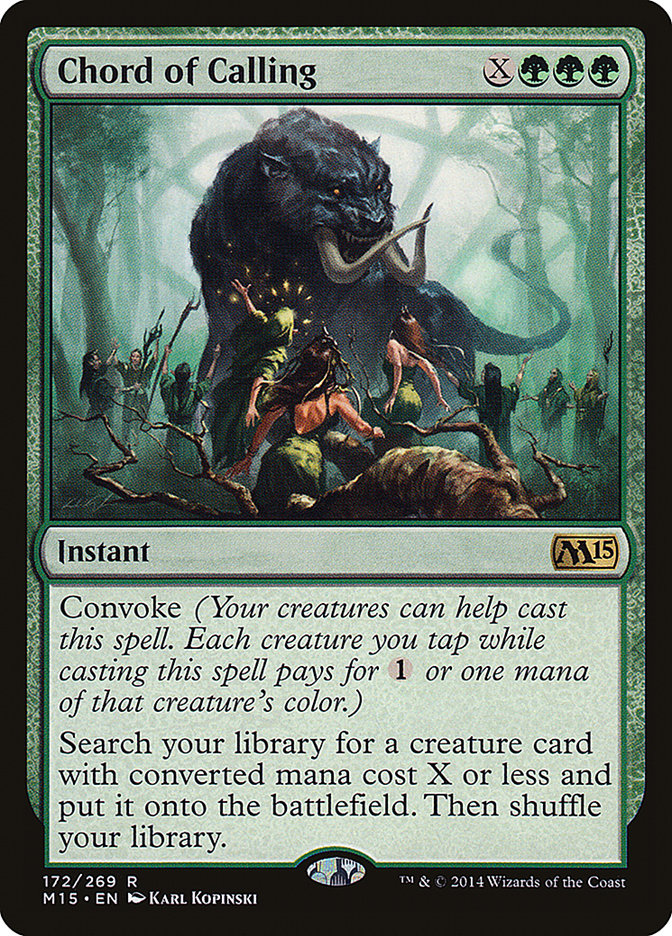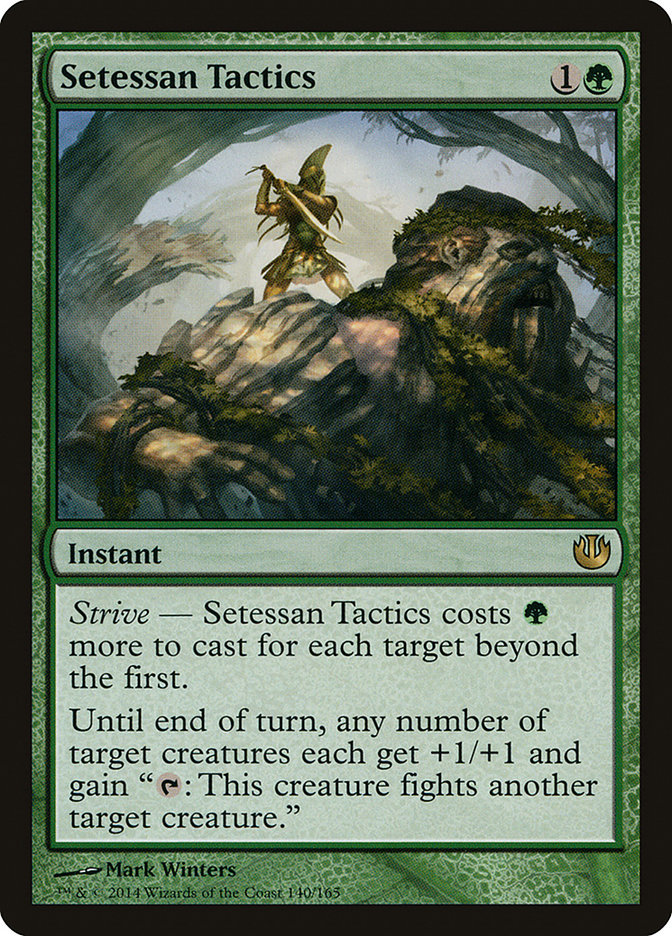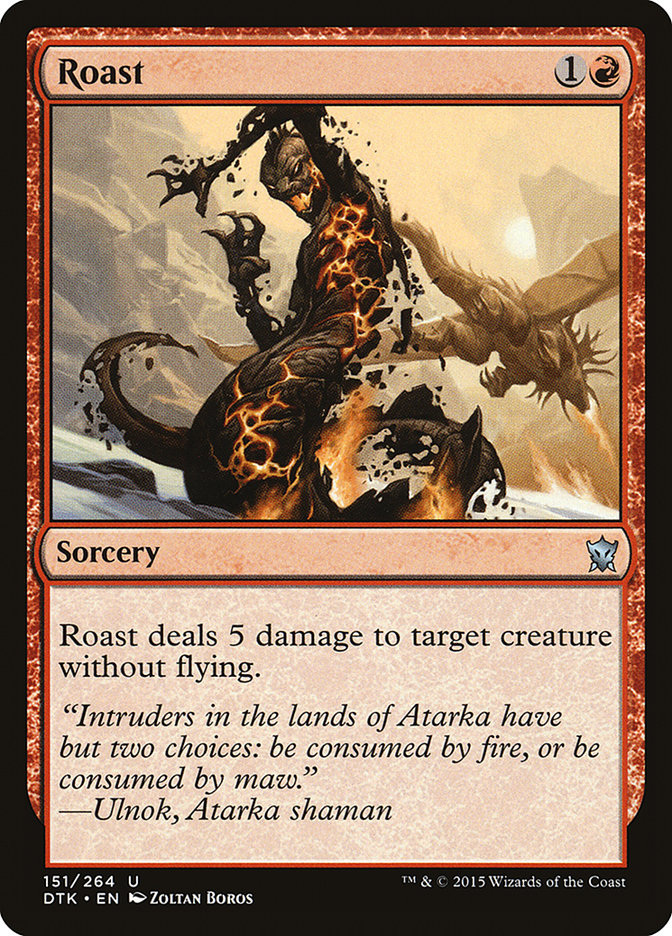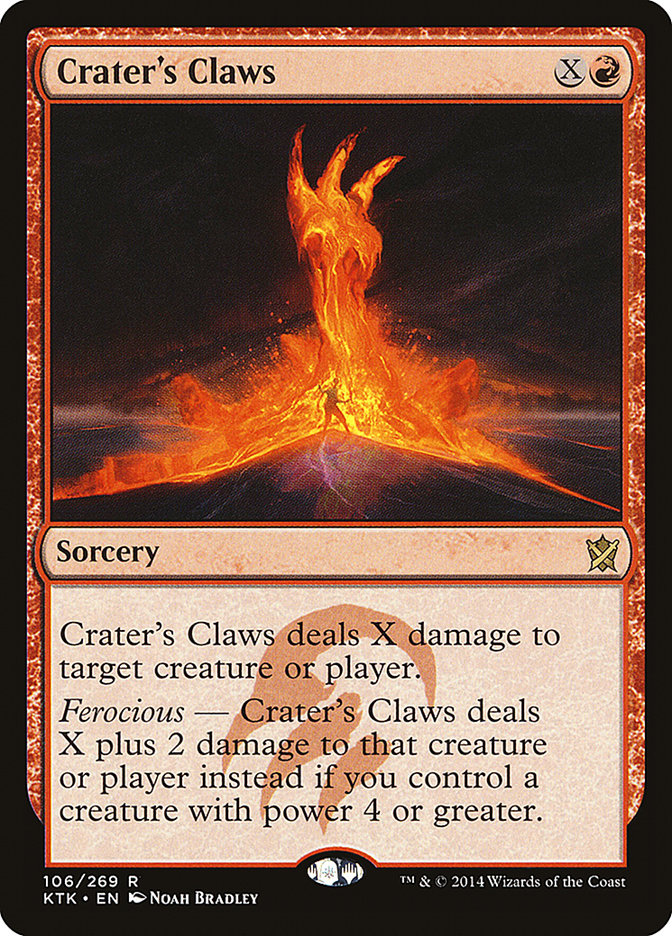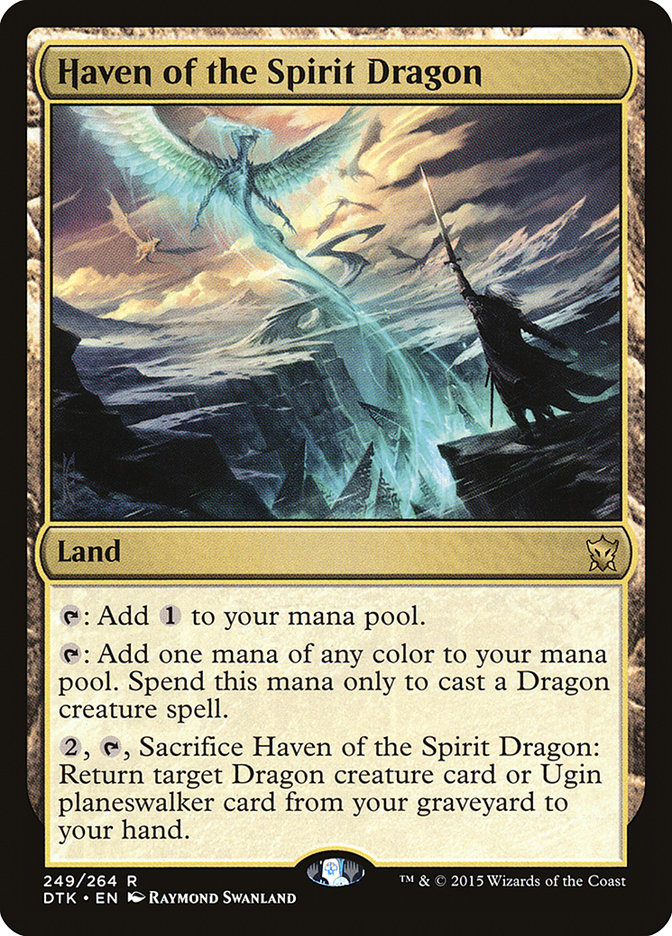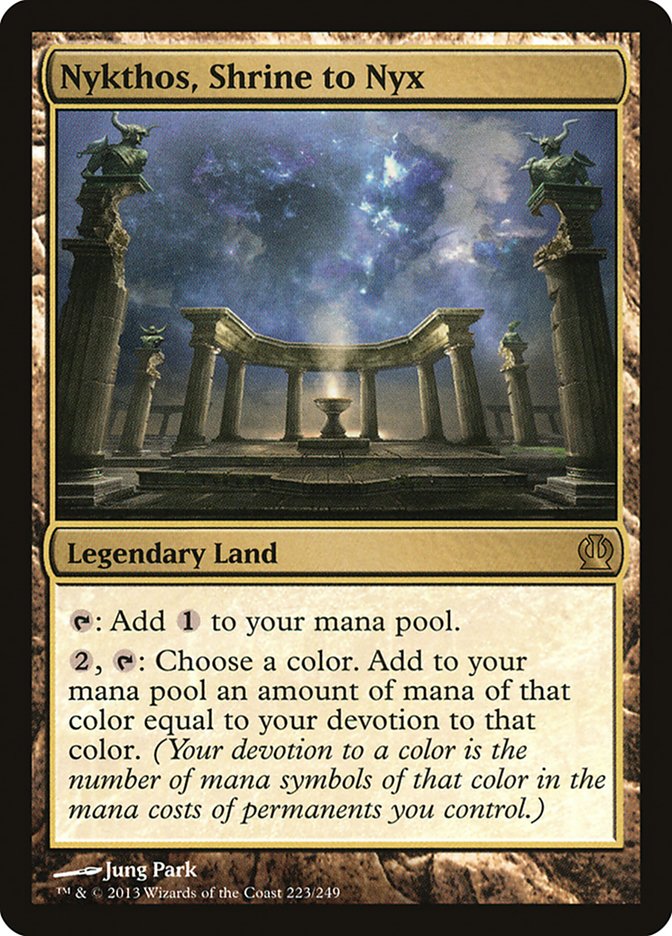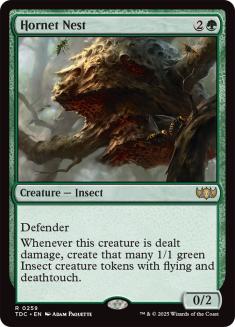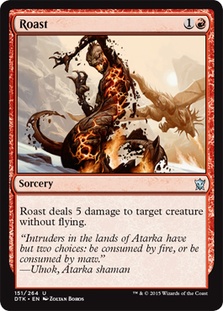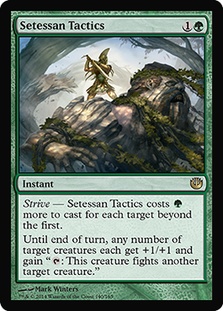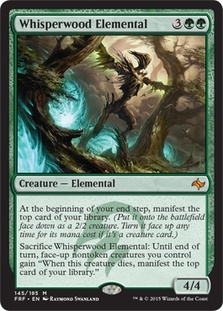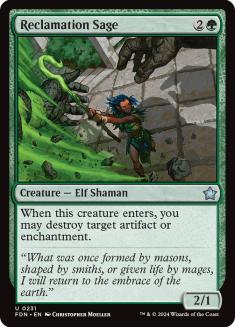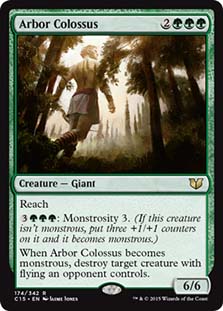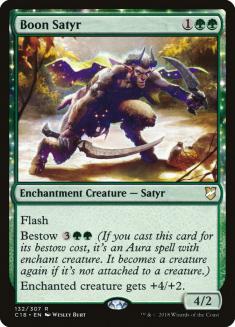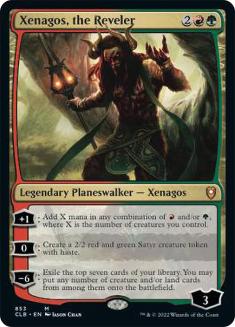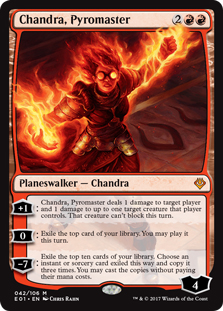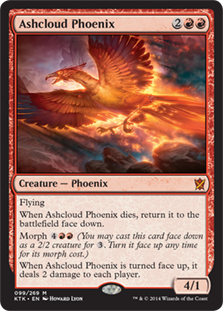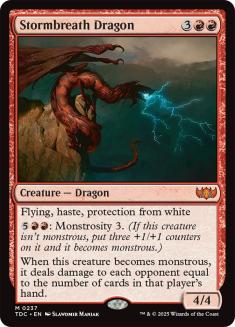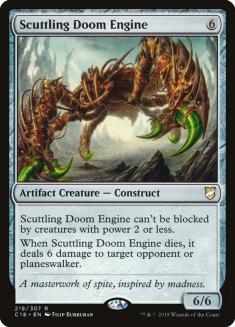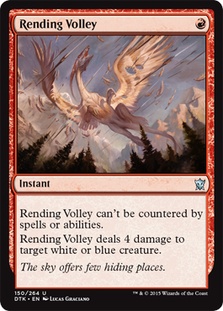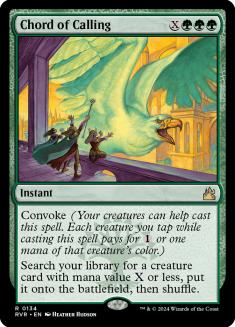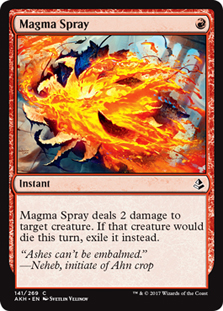I prepared for Pro Tour Dragons of Tarkir with Team UltraPro (formerly “Team Work”). Many of us live in Madison,
and Justin and I still live in the same house, so we started testing as soon as the spoiler was available. I was drawn immediately to green, as I felt like
it got the most great new cards. I particularly liked, in order: Deathmist Raptor, Den Protector, Collected Company, Avatar of the Resolute, and Surrak,
the Hunt Caller. Those were a lot of new tools, and I spent a lot of time building new decks to try to put them in.
Early on, I really gravitated toward the pairing of Deathmist Raptor with Den Protector. Den Protector was the best card to plan to morph and then pay to
unmorph, which made it work well with Deathmist Raptor, as it was another card you could reasonably play that would return the raptor from your graveyard.
They also liked similar support cards, particularly anything that filled your graveyard, like Satyr Wayfinder or anything that manifested cards, like
Whisperwood Elemental or Mastery of the Unseen.
Almost every deck I worked on tried to use these cards in some combination, but I ended up playing green and not playing either of them. So what happened?
“Just a heads up. I really like the bees deck, and I am likely to play some iteration.”
– Bob Maher, April 7
This appeared on Facebook. “Bees” isn’t a deck we’d discussed as a team at all. It didn’t appear in any of our Facebook threads or on any of our
spreadsheets.
I’d known Caleb Durward, who currently lives with Ben Rasmussen, one of our unqualified team members, had just won a PPTQ with the G/R Hornet Nest deck
he’d been working on since before Dragons of Tarkir came out, but I had no idea Bob knew anything about it. I’d fully expected Bob to just show up in a few
days and ask what to play, and here, he’d settled on a deck without my even knowing he’d been working on it. Clearly, if he was that confident that
quickly, there must be something going on here.
I considered the possibility that he just liked the deck because it was fun and goofy and decided he wanted to play it for fun, but that just didn’t seem
like Bob. He’s way too competitive, and Dave Williams seemed committed to it to.
I asked them for their updated list so I could try it out, but they’d just been playing the list Caleb used at the PPTQ, which was 61 cards with a lot of
weird numbers, like three Courser of Kruphix. Andrew Baeckstrom put it together, with an extra Courser of Kruphix, and we played some games with it. We
knew it would be better against aggressive decks and worse against control, so we figured we’d start somewhere in the middle, with Abzan Aggro, to see how
it did against an aggressive deck with Bile Blight.
It did really well. Bile Blight just wasn’t enough. It wasn’t even particularly close to enough. When we tried other matches, the deck just kept winning
more than we expected it to. It was pretty close to even against Abzan Control, and it crushed G/W Devotion, even though I expected the reverse. My
confidence in the deck grew rapidly.
The day before the PT, when Ben Stark got in, I asked if he’d considered the Bees deck, expecting that he probably haven’t even looked at it because it
didn’t seem like the kind of thing he’d take seriously. After cleaning up the numbers on the deck, I got him to take it seriously enough to try putting it
together on Magic Online, and he won his first 8-player queue with it, something he hadn’t been doing with our other decks. I said I’d play Bees if I could
talk him into playing it because I knew it would need to be solid to sell him on a deck that looks this gimmicky.
I managed to do that, and this is what we played, along with several other members of the team (Bob Maher, David Williams, Justin Cohen, Andrew Baeckstrom,
and Ben Stark, I believe):
Creatures (22)
- 4 Elvish Mystic
- 1 Polukranos, World Eater
- 4 Sylvan Caryatid
- 1 Stormbreath Dragon
- 4 Courser of Kruphix
- 4 Hornet Nest
- 1 Ashcloud Phoenix
- 2 Whisperwood Elemental
- 1 Dragonlord Atarka
Planeswalkers (5)
Lands (23)
Spells (10)

These numbers are kind of weird, so what’s going on here?
First, the four-ofs are pretty straightforward. These are the cards that make the deck work. Caleb only had three Courser of Kruphix, but I think the card
is just too important to finding enough action, and too powerful in general, to play fewer than four. We were concerned about Courser of Kruphix as a
liability against Dromoka’s Command, but this deck is pretty good against Dromoka’s Command, a card that isn’t all that played anyway.
We considered cutting a Chord of Calling, but, as Caleb said when Dave Williams asked him about it, “It’s a Chord deck, bro.” Chording for Hornet Nest is
cheap and powerful, and the deck can often make a lot of creatures, and in doing so, finding Dragonlord Atarka with Chord of Calling is just too central to
your gameplan. You really need four of these.
I could see playing only three Hornet Nest, but with Roast, Setessan Tactics, and Chandra, Pyromaster to make it good even when it’s “bad,” combined with
just how great it is any time your opponent was trying to attack on the ground, four really felt right to me.
Next up, the threes: This is the best I’ve ever seen Xenagos, the Reveler work. The deck is great at locking up the ground, so it’s easy for Xenagos to
stay alive, and you can also protect it with Roast. From there, both of Xenagos’s abilities help with casting Chord of Calling, and the +1 gives you enough
mana to strive Setessan Tactics to all but one of your creatures without using any other mana. Xenagos is also great against control decks, and the primary
backup plan in matches where all your hornet-related plans are at their worst. Xenagos isn’t great against certain red decks or in some spots when you’re
on the draw, and the fact that you’re so good at protecting it means you don’t want to draw two because of the legendary nature of Planeswalkers, which is
why there are only three in the maindeck. Still, I feel it’s important to have four in the 75. When I added Xenagos, the Reveler to Caleb’s sideboard,
teammates asked me who I wanted it against. My answer started, “Players who are on the draw.”
Roast and Setessan Tactics are both great. I pointed Roast at my own Hornet Nest to basically create Hornet Queen for three + two mana several times
throughout the Pro Tour, and it usually won the game on the spot. Setessan Tactics usually killed all of my opponent’s creatures and made 3-10 Hornets.
Even when it was bad, in game 1 against control, I strived it to kill Sam Pardee by just using it as a pump spell. The problem with these cards is that you
really don’t want them (or Hornet Nest) against control decks, so we needed to carefully balance the number of maindeck slots devoted to these with
sideboard slots devoted to cards we could bring in in those matchups. We also wanted to minimize just how bad our game 1 against control was.
It’s important to note that, unlike other fight cards, Setessan Tactics allows you creatures to fight each other, which means that even when your opponent
has no creatures, you can often use it as something like an instant speed Hornet Queen, so these “dead” cards are a lot more live than they look even at
their worst.
The rest of the deck, the cards we played one or two of, are the assorted threats and Chord targets. Chandra, Pyromaster is a great card, and the +1
ability is great in this deck because of the combination with Hornet Nest that lets us make a Hornet every turn, which makes it very hard to kill Chandra,
Pyromaster by attacking. The second ability is good any time you don’t have other things you need to do, but it’s slightly worse in this deck than in a
deck with a lower curve because you might already have plans for your mana for the next several turns after you could play Chandra. Fortunately, the added
utility to the +1 ability does a lot to mitigate the risk of that, and Chandra plays very well here.
There are two Whisperwood Elementals because I always want to be able to chord for it when I need it, and if I’m going to draw a random five mana creature
against an unknown opponent, I’d prefer to draw this rather than Stormbreath Dragon because I think of the deck more as a grindy midrange deck than an
aggro deck that’s looking for a quick finisher. I’d prefer the incremental value and insurance against removal that it offers to the faster threat, as I
generally don’t feel pressured to close out a game.
Polukranos, World Eater, Ashcloud Phoenix, and Stormbreath Dragon are all perfectly serviceable threats that I’m happy to draw and cast in a normal game of
Magic, and they also each happen to be cards that are particularly well-suited to certain boardstates or matchups, which make all of them ideal cards to
have one-of to search for when I need them, which is why they’re the maindeck threats.
Dragonlord Atarka is a one card gameplan, and we saw some players at the Pro Tour going so far as to splash an entire extra color in their Abzan decks to
have access to it. Chord of Calling is an even better way to access this finisher than Sidisi, Undead Vizier, and the Dragonlord adds a fantastic endgame
to this deck.
As for the sideboard, we started with the restriction that we could only have five cards we couldn’t bring in in spots where we wanted to cut four Hornet
Nest, four Roast, and four Setessan Tactics. We imagined these decks to look something like Adrian Sullivan’s U/B Control deck, where we could add all our creatures and
Planeswalkers, including Reclamation Sage, and that would leave five spots for cheap red removal.
We knew we wanted Magma Spray and Rending Volley. Magma Spray is the best card we can have against Mono-Red Aggro. Usually, there are a lot of competing
cards that are great against them, like Scouring Sands and Arc Lightning, but because of Hornet Nest, their best plan against us is Goblin Heelcutter, so
the best way to beat them is to have a one mana answer to it. Wild Slash would also do that, but we figured it was more likely that we’d want to exile a
Phoenix than deal damage to a player. Rending Volley is the best card available against any U/W/x Heroic decks, which didn’t really end up showing up at
the Pro Tour, but which we respected. Rending Volley is also good against Abzan and Jeskai Aggro, and serviceable against Dragonlord Ojutai, and I ended up
siding it in over Reclamation Sage against the Esper Dragons decks.
We started with three Rending Volley and two Magma Spray, but we changed it the morning of the tournament because we decided it was too important to answer
Goblin Heelcutter. As it turned out, I never played a match where I wanted Magma Spray, and Rending Volley was great for me, so this change didn’t work out
too well, but it also didn’t end up costing me.
We started with only one Reclamation Sage, but we decided that we’d probably really want it any time we wanted it, and we’d want to be able to chord for it
more than once. As soon as we realized that, we added a second, and it felt much better.
The rest of the sideboard just allows us to turn our threats or sideboard into additional threats where needed. We started with Nissa, Worldwaker as the
Planeswalker to bring in against control, but looking at the rest of the sideboard, I realized we’d be bringing in a lot of expensive creatures, and I
wanted cheaper threats that would be easier to resolve and allow us to present a deck with a reasonable curve, so we just went with additional copies of
the Planeswalkers in the maindeck. Besides, as I hadn’t played much with the deck, I thought there was a chance I’d just decide that I should have played
more Planeswalkers, and I wanted access to them if that happened.
I mentioned that Whisperwood Elemental was the threat I’d want to draw naturally in this deck, so I have another in the sideboard for when I want to
generically increase my threats. This also followed a similar reasoning to the Planeswalkers: I know that Whisperwood Elemental is a fantastic card, and
playing only two might just be wrong, so I could hedge a little against having misbuilt my deck by having access to another in the sideboard.
Stormbreath Dragon is a nightmare for some decks, and it seemed likely that I’d want to have a second to Chord for in certain matchups, so it was another
good generic threat to have another of.
Ashcloud Phoenix is a card I’ve played in sideboards before because it’s an absolute terror for many control decks, and I also like having access to more
of them against Thunderbreak Regent decks, so again, it was something I’d want a second of when it was consistently the right threat rather than just
another serviceable threat.
Arbor Colossus is great against decks based on flying creatures and red removal, like Jeskai and G/R Thunderbreak Regent decks.
Boon Satyr isn’t much of a Chord of Calling target, but I noticed that, as I mentioned above, my deck was starting to look really heavy against control
with all these extra monsters, so I wanted a useful, high impact threat that I could bring in that would keep my curve realistic, and Boon Satyr felt like
the best option (over Goblin Rabblemaster). Given the popularity and success of control at the Pro Tour, I think I’d like to find room for another one or
two of these moving forward.
Scuttling Doom Engine was intended as the best threat to Chord for against Elspeth, Sun’s Champion and Ugin, the Spirit Dragon, and it’s also just a big
annoying threat against any slow deck. It only came up for me once at the Pro Tour, but it won a game against Josh Utter-Leyton where few other cards would
have done it.
A Few Cards That Didn’t Make It
Caleb had Crater’s Claws in the deck, which makes sense–if you’re going to have a ramp deck that makes good use of Xenagos, the Reveler and has a
reasonably high chance of having a ferocious creature in play, you’d probably want to have access to Crater’s Claws. That’s reasonable, and it would win
plenty of games. We didn’t play it because the deck is tight and synergy-driven, and the spot devoted to it doesn’t make our Chord of Callings better, and
it isn’t necessary to anything we’re trying to accomplish. It’s a powerful and flexible card, but we have plenty of those, and we wanted to focus on doing
what we were doing.
We didn’t really consider playing this, and I think we likely should have cut a Mountain for this, even if it meant playing another Rugged Highlands that
I’m not sure we’d even need. Dragonlord Atarka is usually enough, but being able to rebuy it (or Stormbreath Dragon) when it isn’t is huge, and the cost is
pretty low.
There’s some upside here, but I think it’s ultimately going to consistently underperform Haven of the Spirit Dragon.
I could see this as a useful alternative to Boon Satyr as a reasonably cheap threat against control, but the RR casting cost makes me hesitant; this is
very likely not worth it.
Brief Notes on Sideboarding
VS U/B Control
Out:
In:
VS Abzan Control
Out:
In:
VS Abzan Aggro
Out:
In:
VS G/R Dragons
Out (on the play):
In (on the play):
Out (on the draw):
In (on the draw):
VS Mono-Red Aggro
Out:
In:
*Optionally cut another Chord of Calling or Setessan Tactics for Xenagos, the Reveler, or go the other way.
Overall, I thought the deck was great, and it helped me reach my third or fourth best Pro Tour finish ever (12th place) with an 8-2 Constructed record. If
you know your metagame will have a lot of creature decks, this is an outstanding deck choice, but if you expect your opponents to pick up one of the U/B
Control decks from the Pro Tour, this might be a bit of a gamble–you can still win, you’re just disadvantaged. You’ll be great enough against creature
decks that it should still be a consideration for an unknown field.

